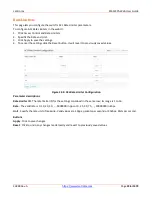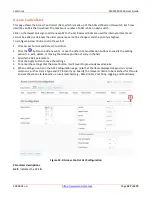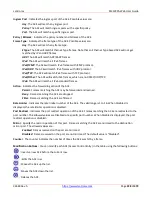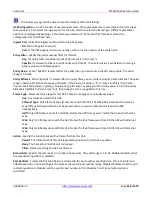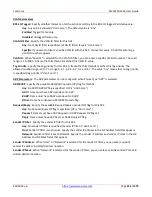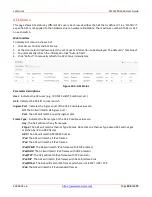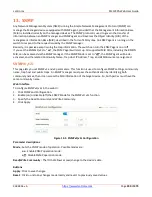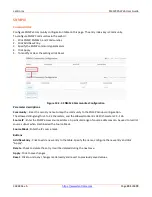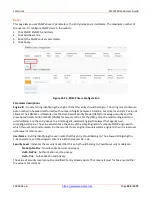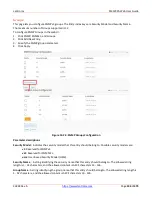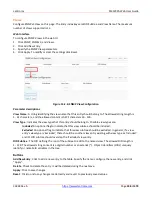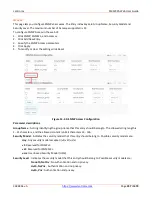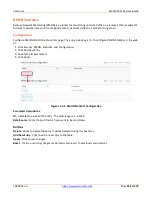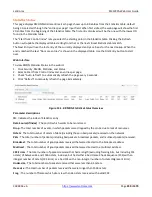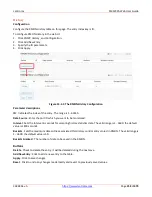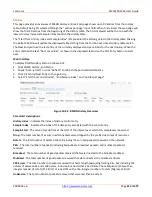
Lantronix
SM12XPA Web User Guide
33848 Rev. A
Page
240
of
473
13. SNMP
Any Network Management System (NMS) running the Simple Network Management Protocol (SNMP) can
manage the Managed devices equipped with SNMP agent, provided that the Management Information Base
(MIB) is installed correctly on the managed devices. The SNMP protocol is used to govern the transfer of
information between an SNMP manager and SNMP agent and traverses the Object Identity (OID) of the
management Information Base (MIB), described in the form of SMI syntax. An SNMP agent is running on the
switch to respond to the request issued by the SNMP manager.
Basically, it is passive except issuing the trap information. The switch can turn the SNMP agent on or off.
If you set the SNMPv1/v2c to “
on
”, the SNMP agent will start up. All supported MIB OIDs, including the RMON
MIB, can be accessed via the SNMP manager. If the SNMP Mode is set to “
off
”, the SNMP agent will be de-
activated, and the related Community Name, Trap Host IP Address, Trap, and all MIB counters are ignored.
SNMPv1/v2c
This page lets you set SNMP v1 and v2 parameters. This function is used to configure SNMP settings, community
name, trap host and public traps. An SNMP manager must pass the authentication by identifying both
community names, then it can access the MIB information of the target device. So, both parties must have the
same community name.
Web Interface
To configure SNMPv1/v2c in the web UI:
1.
Click SNMP and Configuration.
2.
Enable (on) or disable (off) the SNMP Mode for the SNMPv1/v2c function.
3.
Specify the Read Community and Write Community.
4.
Click Apply.
Figure 12-1: SNMPv1/v2c Configuration
Parameter descriptions
:
Mode
: Sets the SNMP mode of operation. Possible modes are:
on
: Enable SNMP operation mode.
off
: Disable SNMP operation mode.
Read/Write Community
: The ID that allows access/change to the device's data.
Buttons
Apply
: Click to save changes.
Reset
: Click to undo any changes made locally and revert to previously saved values.

